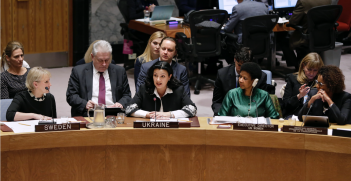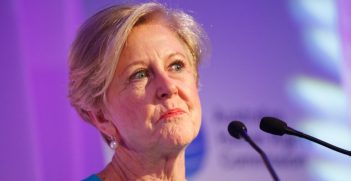International News Coverage of Australia's Bushfires

Global reporting critical of Australian climate change inaction, as social media misinformation campaign tries to shift blame
“As I speak, southeast Australia is on fire,” David Attenborough told the BBC.
The widely respected British broadcaster and natural historian was being interviewed by the British public broadcaster as part of its global warming coverage, ahead of a planned UN conference on climate change in November this year.
He castigated Canberra’s support of coal mining, saying it metaphorically said to the world that Australia did not care about the environment.
Australia’s 2019 – 2020 bushfire season saw 34 people killed, an estimated one billion animals lost, and some endangered species driven to extinction as more than a hundred and eighty thousand square kilometres of the country burned.
Claims that the fires were not linked to climate change, Attenborough said, were “palpably nonsense.”
Despite cost-cutting and the onslaught of digital content, most newsrooms – like those of the British public broadcaster to whom Attenborough spoke – do retain fact-checking and sub-editing processes.
Away from such newsrooms, and as the worst bushfire season in recent memory was decimating parts of Australia, social media was doing what it usually does during a natural disaster.
At best, it exaggerated false or misleading information.
At worst, it actively engaged in campaigns of misinformation.
For instance, a three-dimensional visualisation of the fires (based on satellite data) by Australian artist Anthony Hearsey was taken for an official NASA image by, among others, US entertainer Rihanna who shared the image to her ninety-five million Twitter followers.
“So what?” might be a natural response to this seemingly innocent mistake – and it would be a fair one.
You could argue that such an example of “fake news” is relatively harmless, unlike several misinformation campaigns by bots which have variously tried to credit an arson epidemic, the Islamic State, Chinese property developers, or the need for high speed rail down Australia’s east coast as the culprits behind the 2019-2020 fire season.
We can and should mock the ludicrous, fact-free nature of such conspiracy theories.
However, the prospect of looking forward to longer, more destructive, and hotter fatal bushfire seasons on an annual basis is no laughing matter.
Ultimately, the end goal of the social media misinformation campaigns was to move the conversation – and blame – away from Australia’s inaction on climate change.
There was a stark contrast between attempts to blame-shift by the factcheck-free world of the bots, and a lot of the coverage from older, mainstream global media outlets.
These outlets, studies show, still maintain some level of trust and credibility over less established content distributors on video, social, and blogging platforms.
Unlike the conspiracy-driven narratives pushed on social media, much of the foreign media reporting of the fires skewered the failure of successive Australian federal governments to acknowledge and adapt to the new weather normal.
Attenborough’s sombre words to the BBC about the fires represent one example of this critique.
Like any interview involving a high profile, credible interviewee who gives a “hot take” on a current issue, the most pertinent, juicy parts were then reproduced in the coverage of other international media outlets.
The narrative found in the global media framed the bushfires within the context of Australian governments’ decades of unpreparedness – despite repeated warnings from the countries’ scientists – and ongoing reluctance to acknowledge the effects of climate change.
That frame of reporting continued as the fires burned.
For example, an Australian state government inquiry into a natural disaster would not normally make global headlines.
But the New South Wales state government’s probe into the fires did, with Al Jazeera and Voice of America, among others, noting the inquiry would examine the role climate change played in the disaster and how prepared the state’s authorities were for future bushfire seasons.
Meanwhile, the wire service Reuters looked at the contrast between the climate change scepticism of some rural voters, whose homes and livelihoods had been ravaged by drought, and dire scientific warnings that global warming would create more perfect storms for extreme bushfires.
Reuters also laid out some of the dubious honours Australia held with regard to the “debate” over climate change, including possession of one of the world’s highest carbon footprints per capita, and being one of the largest exporters of coal and gas.
And in its follow-up report on torrential rains helping to extinguish some of the longest burning bushfires, American broadcaster NBC pointed out that 2019 was Australia’s hottest and driest year on record, and that experts attributed the country’s extreme weather in part to climate change.
The bushfires of 2019-2020, NBC reported, “put the Australian government under increased pressure from environmental groups, scientists and the public to address the climate change issue.”
Harrowing images of affected towns, people, and wildlife caused an outpouring of global sympathy for Australian people and animals affected by the fires.
Yet Australian governments were – rightly – the subject of global criticism for a lack of preparedness, and a lack of acceptance of the reality of climate change’s role in creating the conditions that allowed the 2019-2020 bushfires to burn as widely as they did.
Dr Nasya Bahfen is a senior lecturer in the Department of Politics Media and Philosophy at La Trobe University. She coordinates the Master of Communication (Journalism Innovation), teaches undergraduate journalism subjects, and supervises research students. Prior to teaching Nasya was a journalist and producer for ABC Radio Australia, ABC Radio National, and SBS in radio and online.
This article is published under a Creative Commons Licence and may be republished with attribution.





